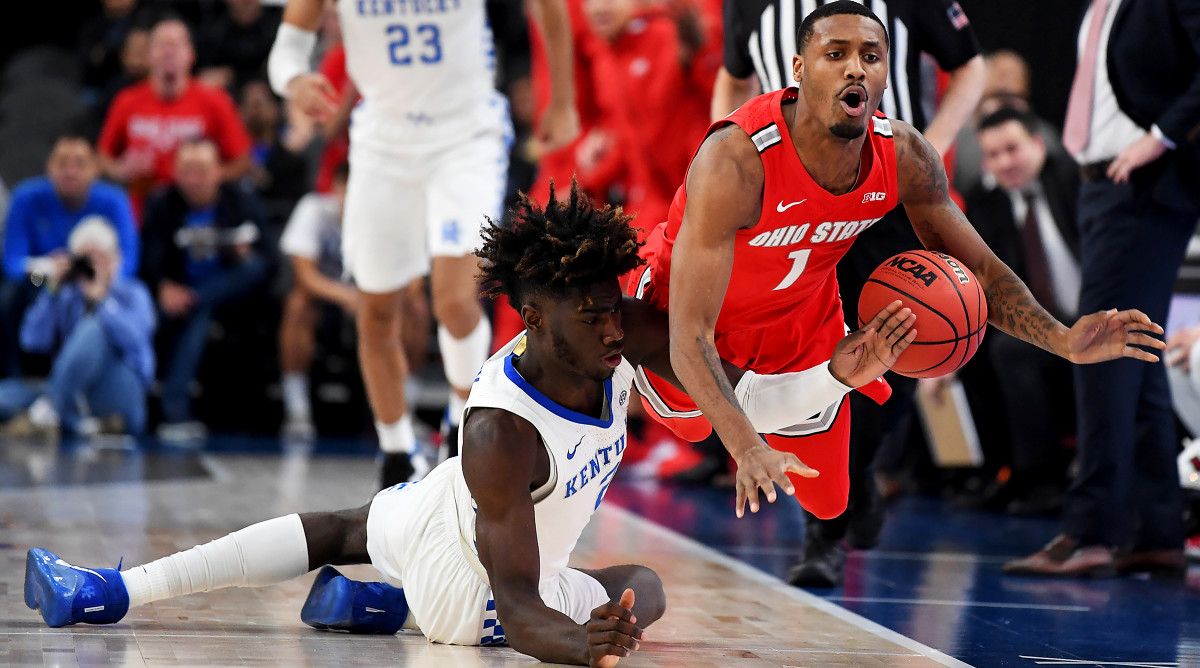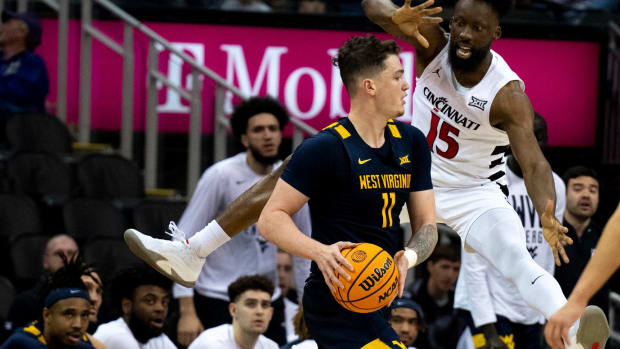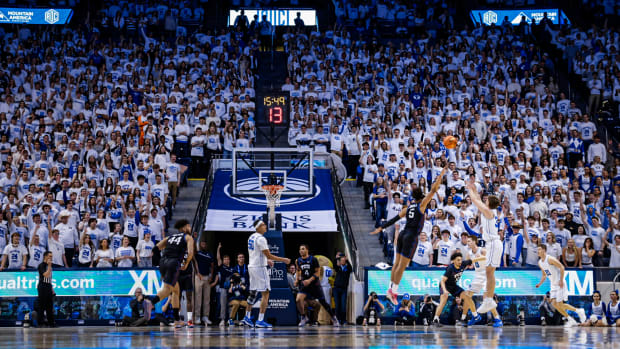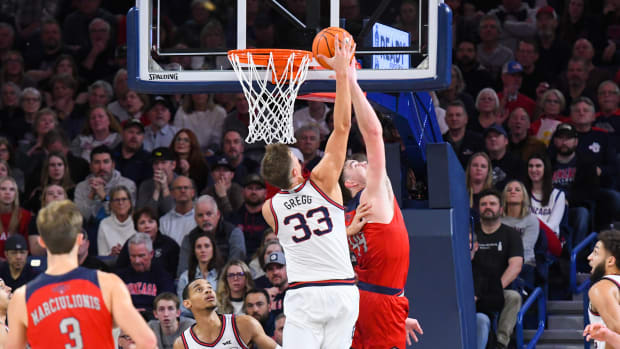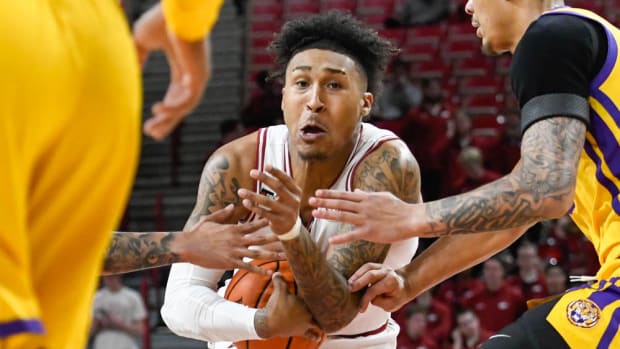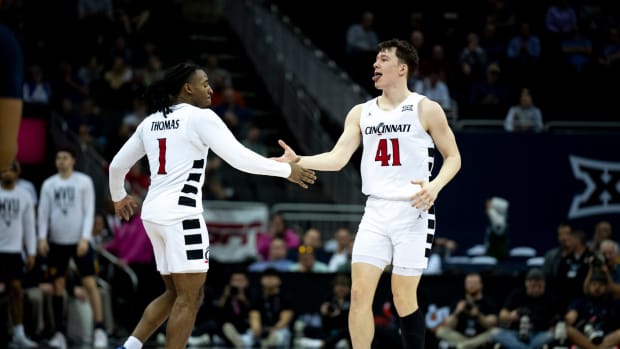Kentucky Shouldn't Panic After Second Straight Loss
LAS VEGAS — Left in the neon desert with nothing else to stew on but their own (somewhat exaggerated) demise after losing to Utah in the same building 72 hours prior, it would be correct to state that Kentucky responded. The sky didn’t fall. The Wildcats did, 71-65 to Ohio State at T-Mobile Arena, their second straight loss as non-conference play draws to a close. Traditionally, this time of year has been a positive checkpoint. How much panic is necessary lies in the eyes of the beholder.
This particularly Kentucky team is not a juggernaut, although expectations will always subvert reality. At this point the actual result means less than the substance. Had the Wildcats doubled over after Wednesday’s underwhelming, sub-standard effort, this would have been a code red. They’re far from infallible, but it was nice to see the fortitude after the Utah game proved a drag from start to finish. This was a normal loss, in what felt like a meaningful game between two pretty good teams. Ohio State led for the final 28 minutes, although it was never that one-sided.
Results aside, Kentucky seemed to benefit from the past couple days. There was little mental lag after a disappointing loss. “I felt like we had a lot of energy starting off and finishing, too. We just messed up in certain parts,” Ashton Hagans said. “It’s just small things right now." Hagans and Tyrese Maxey were more aggressive. A healthier-looking Nate Sestina hit jumpers. They trailed by just one at halftime, and never entirely folded. “This game kind of shows where we are right now,” said Sestina.
“This was a good sign for us,” said John Calipari, also citing the last 10 of minutes of the Utah loss. His typical bemusement felt appropriate. Still, his mood was unusually chilled. “This is the process we go through every year,” Calipari added. “[Eventually] they figure out, ‘If I don’t fight I’m not making it. If I’m not a dog, I’m not making it.’” Better ball movement and late-game execution might have birthed a better result. But this was, more or less, the group that was advertised.
High hopes are part of the deal in Lexington. You can point to the Wildcats’ various structural weaknesses: a lack of viable wing depth, inconsistent guard play, no low-post presence and a lack of potency from behind the arc. It’s troublesome that the shooting is the least correctable issue—five threes from Sestina proved a difference-maker (“our entire halftime was consumed with guarding his ball screens,” Ohio State coach Chris Holtmann later admitted). Nobody else much threatened.
While Kentucky may not be as good as advertised, this was far from disheartening, particularly against a Buckeyes team shaping up as a legitimate contender. And if nothing else, the Wildcats (and the rest of college hoops, in truth) can take solace in how difficult it’s been for anyone to define legitimate. Just last week, the same Ohio State team lost by 13 at Minnesota. Kentucky's loss Saturday came hours after Kansas fell at Villanova, becoming the fifth No. 1-ranked team to lose this season. Louisville, Duke, Michigan State and yes, Kentucky (at the hands of Evansville, lest we forget) make for starry company.
Perhaps equally as indicative: unranked North Carolina and UCLA, devoid of both NBA talent, reliable upperclassmen or consistent rudders, played a competitive, yet subliminally depressing tilt. With top teams across the country in various states of flux, success and failure have been extremely relative. Trying to make sense of the carnage is useless: an unpredictable season devoid of untouchable teams means there’s plenty at stake the rest of the way.
“My message to these guys is they need each other,” Calipari said Friday. “[Against Utah] we played 10 minutes, maybe 11 minutes, the way we’re going to have to play for 40. We’re maybe not capable of that right now, but let’s not make it 10. Let’s make it 25 or 30 so we can fight and see where we are.”
Ostensibly, Saturday was closer to the full 40. It’s not off-base to posit that the Wildcats’ problems are, more or less, everyone else’s—except, of course, Kentucky is Kentucky. Jelling and meshing in perpetuity, the Wildcats seem to turn a corner around this time each year. With Louisville on tap and a tricky SEC slate lying in wait, there’s no hiding the fact it hasn’t happened yet. If nothing else, they seem to think they’re close. All things considered, close could be enough.
